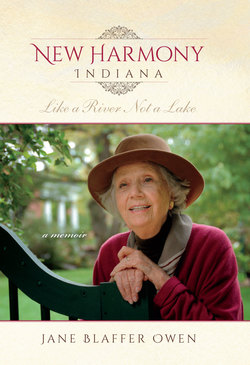Читать книгу New Harmony, Indiana - Jane Blaffer Owen - Страница 9
На сайте Литреса книга снята с продажи.
Foreword
ОглавлениеJ. Pittman McGehee
FOR THE BEST OF THREE DECADES, I was Jane Blaffer Owen’s priest. I helped usher her into the next realm as homilist at her burial office in Houston.1 I knew Jane well. This memoir should be read with an image of her standing in the nave of a roofless church, beneath a floppy hat, her eyes fluttering, and her smile as wide as the Wabash River. It should be read with the animation she brought to her life and to the lives of the many she touched.
I spent many an evening with Jane, both at her home in Houston and in New Harmony. I especially relish the memories of our times together in New Harmony. She invited me there to lecture, lead a retreat, or bless a new building. Inevitably we would settle into her den with refreshment and talk. She loved a story, and she told them well. Jane spoke of priests and poets, artists and archbishops, all people she had known. She shared her own spiritual journey and deep appreciation for the mystery, telling how she had experienced the transcendent in her ordinary life. She also spoke of her losses, disappointments, and moments of quiet desperation. Jane never tried to hide her humanity. At her funeral, I spoke about the word eccentric, meaning “out of the center.” Jane’s eccentricity was not strange or unattractive but authentic. Her authenticity brought appeal not only from powerful agents of change but also from humble partners in her efforts.
This is primarily a story of the evolution of her New Harmony mission. But more so, it is a story of how a woman served her purpose well and how the world benefited. New Harmony was her organizing principle. As this principle evolves, we will be introduced to artists, architects, theologians, ecclesiastical leaders, writers, and poets, all of whom added their presence to the soul of New Harmony. You will read about the history of that sacred space and be enlightened by poetry, literature, and myth. Jane weaves the tapestry of a life lived in service to a calling to bring beauty and meaning to a world needing both.
Although the memoir focuses primarily on New Harmony, Jane’s influence there was not exerted at the expense of her hometown. The University of Houston, the Museum of Fine Arts, Houston, the C. G. Jung Educational Center, Episcopal High School, and Christ Church Cathedral, among many others, benefited from her exuberant benevolence. I mention these to highlight the many seeds sown as Jane sought to satiate her curiosity for the novel and her longing for the divine. She lived the larger life. She did not bury her talents in the ground but spent them in service of meaning and purpose.
This reflective memoir shows the brightness of her touch and the depth of her search for the sacred in nature, creativity, literature, symbols, art, and even in suffering. Her life, though abundant, was not without illness, the darkness of loss, and the vicissitudes of the human predicament.
Jane Blaffer Owen was given much, and much was demanded from her.
She responded with a courageous and creative life. At the balance of her days, she had the fulfillment of all that she had given away. Jane often quoted Luke 12:48: “From everyone who has been given much, much will be demanded, and from the one who has been entrusted with much, much more will be asked.”
The Very Reverend J. Pittman McGehee, DD, is a Jungian analyst and director of Broadacres Center for spirituality and psychology; former dean of Christ Church Cathedral, Houston, Texas.
